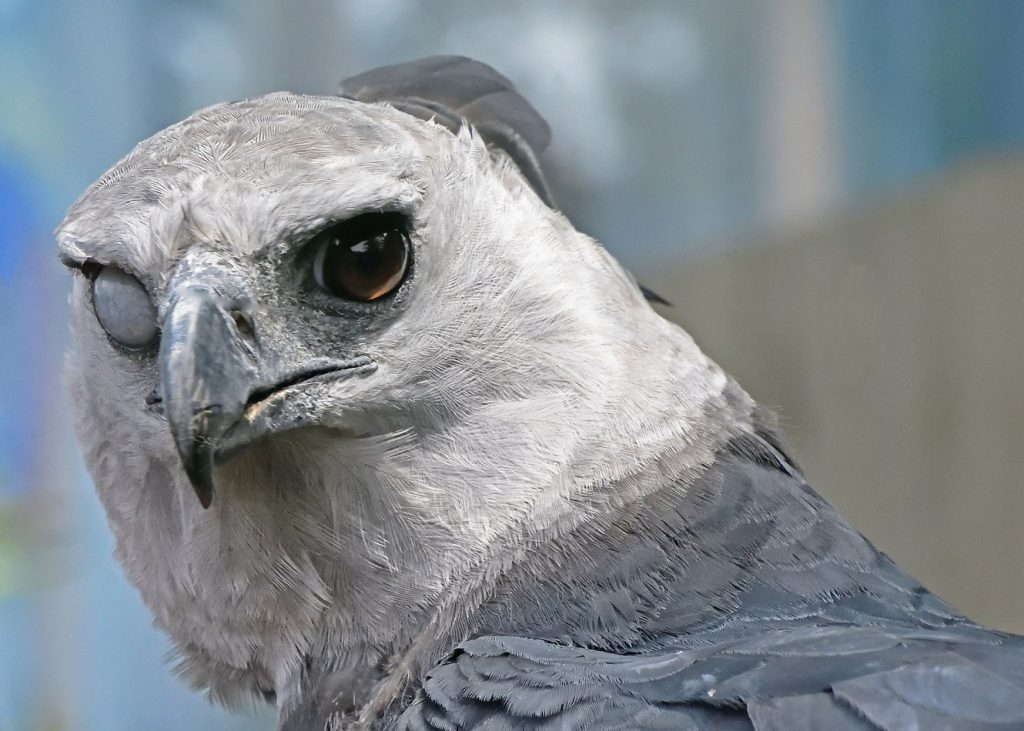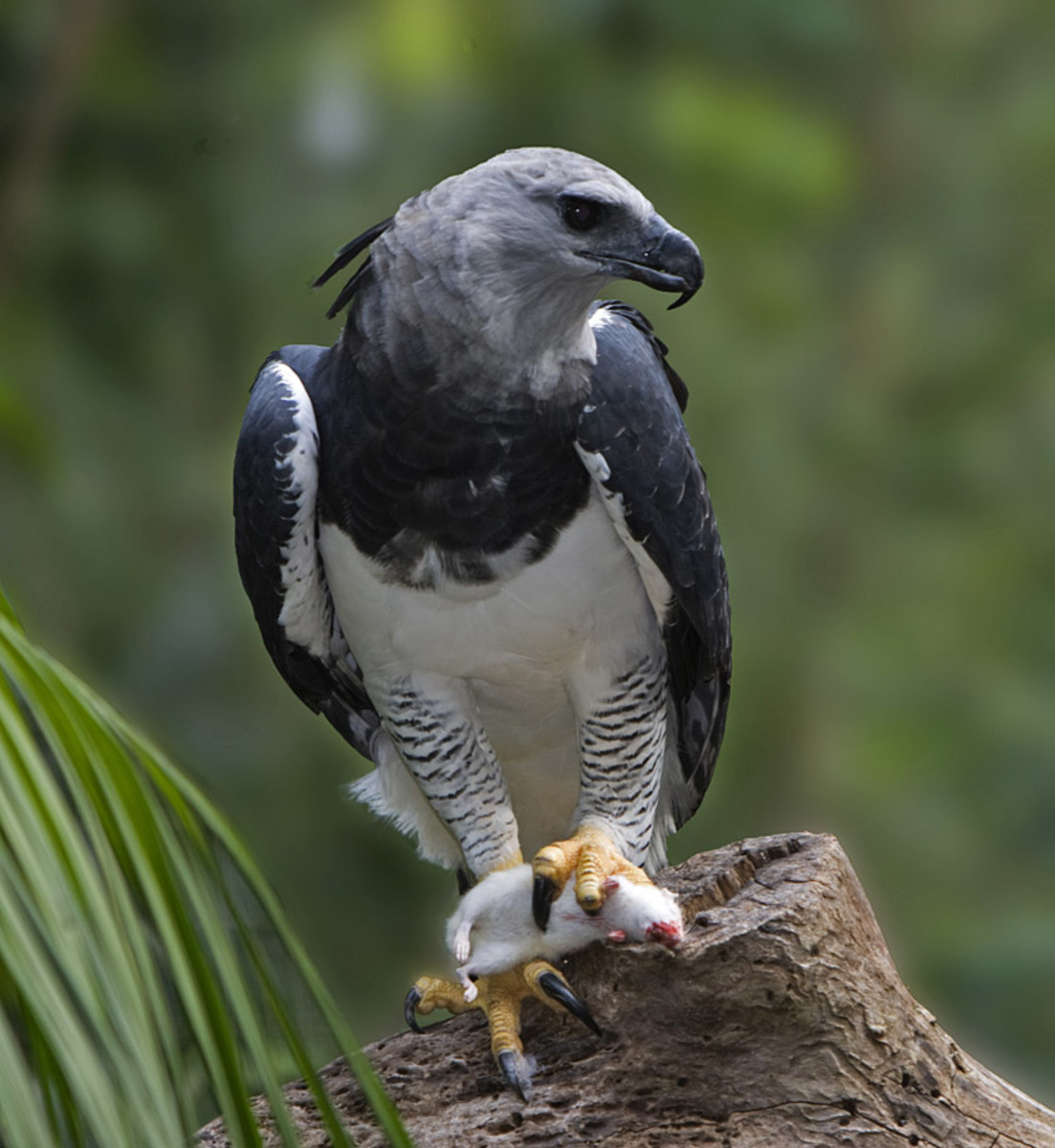The Colombian National Bird: Harpy Eagle's Majesty And Significance
The harpy eagle, a majestic bird of prey native to the Americas, holds a special place in Colombian culture as the national bird. Revered for its immense size, striking appearance, and unparalleled hunting prowess, this raptor symbolizes strength, freedom, and sovereignty. As we delve into the world of the harpy eagle, we uncover not only its biological marvels but also its deep cultural importance in Colombia and beyond.
The harpy eagle's status as Colombia's national bird is more than just symbolic—it represents the country's commitment to preserving its rich biodiversity and natural heritage. With its powerful presence and keen eyesight, the harpy eagle embodies the spirit of Colombia's wilderness and serves as a reminder of the importance of conservation efforts.
Through this article, we will explore the harpy eagle's characteristics, habitat, cultural significance, and conservation challenges. By understanding the role of this magnificent bird in both nature and society, we can appreciate why it stands as a national emblem of Colombia and what it means for the future of wildlife preservation.
- Griffin Musk The Rising Star In The Spotlight
- Bolly4u Hindi Movies Your Ultimate Destination For Bollywood Entertainment
Table of Contents
- Biography of the Harpy Eagle
- Physical Characteristics of the Harpy Eagle
- Habitat and Distribution
- Diet and Feeding Habits
- Reproduction and Life Cycle
- Cultural Significance in Colombia
- Conservation Status and Threats
- Conservation Efforts
- Long-Term Impact of Conservation
- Conclusion
Biography of the Harpy Eagle
Overview of the Harpy Eagle
The harpy eagle (Harpia harpyja) is one of the largest and most powerful birds of prey in the world. Native to the tropical rainforests of Central and South America, including Colombia, this magnificent raptor has captured the imagination of humans for centuries. Below is a summary of its key attributes:
| Attribute | Details |
|---|---|
| Scientific Name | Harpia harpyja |
| Common Name | Harpy Eagle |
| Family | Accipitridae |
| Order | Accipitriformes |
| Wingspan | Up to 2 meters (6.5 feet) |
| Weight | 4.8–9 kg (10.6–19.8 lbs) |
The harpy eagle's impressive physical attributes make it a formidable predator in its natural habitat. Its strong talons, sharp vision, and stealthy hunting techniques contribute to its reputation as a top predator in the rainforest ecosystem.
Physical Characteristics of the Harpy Eagle
Size and Appearance
The harpy eagle's size and appearance are nothing short of awe-inspiring. With a wingspan of up to 2 meters and weighing between 4.8 to 9 kilograms, it is one of the largest eagles in the world. Its plumage is primarily dark gray on the upper body and white on the underside, with a distinctive black band across its chest. The crown of its head features a striking crest of feathers, which it raises when alert or excited.
- 5movierulz Kannada 2024 Your Ultimate Guide To Kannada Movies
- Unlock The Secrets Of The Blue Salt Trick A Comprehensive Guide
Key Features:
- Powerful talons capable of exerting up to 534 pounds of pressure
- Keen eyesight, allowing it to spot prey from great distances
- Adapted feathers for silent flight, enabling stealthy hunting
These physical adaptations make the harpy eagle an efficient and stealthy hunter, capable of capturing prey with precision and speed.
Habitat and Distribution
The harpy eagle primarily inhabits the dense tropical rainforests of Central and South America, where it can find ample cover and prey. In Colombia, its range extends across the Amazon and Chocó regions, where the lush canopy provides an ideal environment for hunting and nesting.
Threats to Habitat
Deforestation and habitat destruction pose significant threats to the harpy eagle's survival. As human activity continues to encroach on its natural habitat, the availability of suitable nesting sites and prey diminishes. Conservationists are working tirelessly to protect these vital ecosystems and ensure the survival of this magnificent species.
Diet and Feeding Habits
The harpy eagle's diet consists mainly of arboreal mammals, such as sloths, monkeys, and large birds. Its powerful talons and sharp vision enable it to capture prey with remarkable efficiency. Studies have shown that the harpy eagle can lift prey weighing up to half its own body weight, making it one of the most formidable hunters in the animal kingdom.
Hunting Techniques
- Perches silently in the canopy, waiting for prey to come within striking distance
- Uses its sharp vision to detect movement in the dense foliage
- Delivers a swift and powerful strike with its talons
These hunting techniques highlight the harpy eagle's adaptability and skill as a predator, ensuring its survival in the competitive rainforest environment.
Reproduction and Life Cycle
The harpy eagle's reproductive cycle is a fascinating aspect of its biology. Mating pairs are monogamous and often remain together for life, working together to build nests and raise their young. The female typically lays one to two eggs, which are incubated for approximately 53 to 56 days.
Challenges in Reproduction
One of the primary challenges facing harpy eagle reproduction is the scarcity of suitable nesting sites due to habitat loss. Conservation efforts are crucial in preserving the necessary conditions for successful breeding and raising of offspring.
Cultural Significance in Colombia
The harpy eagle holds a revered place in Colombian culture as the national bird. Its majestic presence and symbolic representation of strength and freedom resonate deeply with the Colombian people. The bird is often featured in art, literature, and folklore, serving as a reminder of the country's rich natural heritage.
Celebrations and Traditions
In Colombia, the harpy eagle is celebrated through various cultural events and traditions. Annual festivals and ceremonies honor the bird's significance, raising awareness about its importance and the need for conservation efforts.
Conservation Status and Threats
The harpy eagle is currently classified as "Near Threatened" by the International Union for Conservation of Nature (IUCN). Its population has declined significantly due to habitat loss, hunting, and illegal trade. According to the IUCN Red List, the global population of harpy eagles is estimated to be between 20,000 and 50,000 individuals.
Primary Threats
- Deforestation for agriculture and logging
- Hunting for sport or to protect livestock
- Illegal capture for the exotic pet trade
Addressing these threats requires a coordinated effort from governments, conservation organizations, and local communities to protect the harpy eagle's habitat and ensure its survival.
Conservation Efforts
Various conservation initiatives have been implemented to protect the harpy eagle and its habitat. National parks and protected areas in Colombia, such as the Chocó Region and the Amazon Rainforest, serve as vital sanctuaries for the species. Additionally, educational programs and community outreach efforts aim to raise awareness about the importance of conserving this magnificent bird.
Successful Programs
One notable success story is the Harpy Eagle Conservation Program, which focuses on breeding and reintroducing harpy eagles into the wild. Through collaborative efforts with local communities and international organizations, the program has achieved significant progress in increasing the harpy eagle population.
Long-Term Impact of Conservation
The long-term impact of conservation efforts for the harpy eagle extends beyond the species itself. By protecting its habitat, we also safeguard the biodiversity of the rainforest ecosystem, benefiting countless other plant and animal species. Furthermore, the harpy eagle serves as an ambassador for conservation, inspiring people worldwide to take action in preserving our planet's natural treasures.
Conclusion
The harpy eagle, Colombia's national bird, embodies the majesty and significance of nature's wonders. Through its impressive physical attributes, cultural importance, and role in the ecosystem, the harpy eagle inspires awe and admiration. However, its survival depends on our commitment to conservation and the protection of its habitat.
We invite you to take action by supporting conservation efforts, sharing this article, and learning more about the harpy eagle and its significance. Together, we can ensure that future generations will continue to marvel at the beauty and power of this incredible bird.
For further reading, explore the following resources:



Detail Author:
- Name : Mrs. Janae Jones
- Username : zion.kemmer
- Email : berge.bradly@grant.net
- Birthdate : 1988-04-02
- Address : 8744 Goyette Plains West Modestafort, CO 13581
- Phone : 678.628.7013
- Company : Ernser-Emmerich
- Job : House Cleaner
- Bio : Vel vel repellendus nesciunt eum. Quibusdam est pariatur repellat corrupti. Qui ab labore enim pariatur. Et possimus error eveniet quo.
Socials
linkedin:
- url : https://linkedin.com/in/chloe.crooks
- username : chloe.crooks
- bio : Voluptas aut magnam expedita qui.
- followers : 1927
- following : 2101
facebook:
- url : https://facebook.com/chloe_crooks
- username : chloe_crooks
- bio : Officiis ab et accusantium rerum. Nulla totam reprehenderit delectus.
- followers : 4993
- following : 1848
twitter:
- url : https://twitter.com/ccrooks
- username : ccrooks
- bio : Ea rerum et soluta deserunt maxime ab. Sed velit a iure porro quae.
- followers : 2656
- following : 1061
instagram:
- url : https://instagram.com/ccrooks
- username : ccrooks
- bio : Est amet iure et ut. Id dolorum ad et minus sequi ipsum corrupti accusamus.
- followers : 3231
- following : 1215